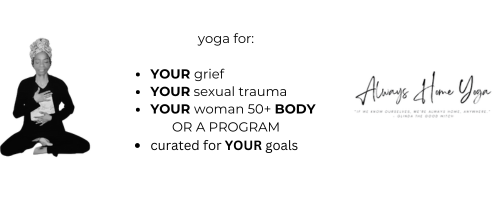Why a Body Scan Meditation is a Game-Changer for Mindfulness, Self-Care, and Stress Management
Our minds constantly jump between deadlines, notifications, and responsibilities, and finding a moment of calm can feel impossible. But what if I told you you could hit the pause button, reset your nervous system, and reconnect with yourself in just a few minutes? Enter the Body Scan Meditation—a simple yet transformative practice that grounds you in the present moment and nurtures your well-being.
Here’s why this practice is a must-have in your mindfulness and self-care toolbox:
1. It Cultivates Mindfulness (Without the Overwhelm)
Mindfulness can sometimes feel like an abstract concept: “Be present. Focus on the now.” But how? The body scan bridges that gap by giving you a tangible focus—your body. You anchor your attention in the here and now by intentionally bringing awareness to each part of your body, from the crown of your head to your toes.
This gentle, moment-by-moment awareness quiets the mental chatter and helps you practice being fully present. The body scan isn’t about forcing yourself to relax but about noticing what’s already happening in your body without judgment. This non-judgmental awareness is the cornerstone of mindfulness.
2. It’s a Deep Form of Self-Care
When was the last time you truly listened to your body? We often push through pain, ignore fatigue, or suppress emotions because life demands it. The body scan is an invitation to check in with yourself compassionately.
As you move your awareness through your body, you may notice areas of tension you’ve been carrying without realizing it—tight shoulders from hours at a desk, a clenched jaw from unspoken stress, or heavy legs after a long day. The act of noticing and breathing into these areas can feel like giving yourself a much-needed hug. It’s an acknowledgment that your body deserves care and attention, too.
3. It’s a Natural Stress-Relief Tool
Stress lives in the body as much as in the mind. It often manifests as physical symptoms, such as a racing heart, shallow breathing, and tense muscles. The body scan disrupts the stress cycle by promoting relaxation through awareness and breath.
When you pay attention to each body part and consciously release tension, you signal to your nervous system that it’s okay to let go. The deep, intentional breathing accompanying the practice stimulates your parasympathetic nervous system, responsible for rest and recovery. The result? Lower cortisol levels, reduced heart rate, and a clearer mind.
4. It Builds Gratitude for Your Body
We spend so much time criticizing our bodies—focusing on what we wish were different or “better.” The body scan offers a chance to flip the script. As you tune into each part of your body, you’re not just noticing tension but also acknowledging the incredible things your body does for you every day.
Your feet carry you through the world; your hands hold the things you love, and your lungs breathe life into you. By ending the practice with gratitude for your body, you create a profound shift from criticism to appreciation—a cornerstone of self-compassion.
How to Practice the Body Scan
If you’re new to the body scan, here’s a quick guide to get started:
- Find a comfortable position. Sit or lie in a quiet space where you won’t be disturbed.
- Close your eyes. Take a few deep breaths, releasing any immediate tension or distractions.
- Bring awareness to your body. Starting at the top of your head, focus on each part of your body—your forehead, jaw, shoulders, arms, hands, chest, and so on—down to your toes.
- Notice what’s there. Sensations, tightness, relaxation, or even numbness. Don’t try to change anything; just notice.
- Breathe deeply. Inhale deeply and exhale slowly as you release any tension you find.
- End with full-body awareness. Imagine your entire body as a single, unified whole. Take a moment to thank your body for all it does.
Why This Works for Everyone
The beauty of the body scan is its simplicity and accessibility. It doesn’t require fancy equipment, a yoga studio, or prior meditation experience. Whether you’re a beginner or seasoned in mindfulness practices, this meditation meets you where you are.
Depending on your schedule, you can spend 5- or 30 minutes with it. The benefits compound—regular practice helps build a stronger mind-body connection, making it easier to notice stress early and respond with care.
Your Next Step
Try a body scan meditation followed by a gentle body awareness Yoga practice today on the Yoga Saved Me Podcast. Even a few minutes of mindful attention to your body can create calm and clarity throughout your day. Make it a regular part of your self-care routine, and notice how your relationship with your body, stress, and sense of presence begins to transform.
Your body is your home. Isn’t it time to listen to it?

